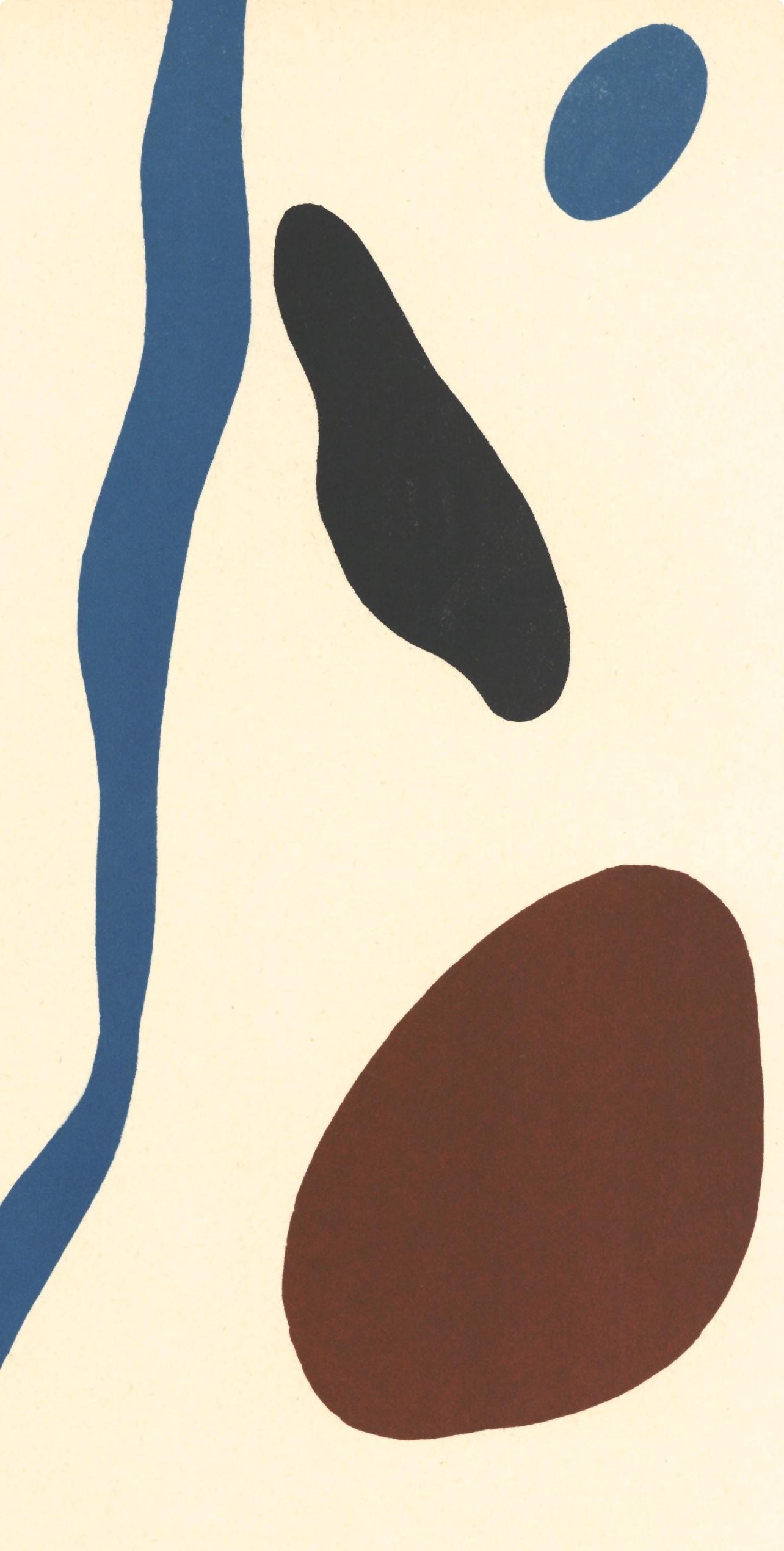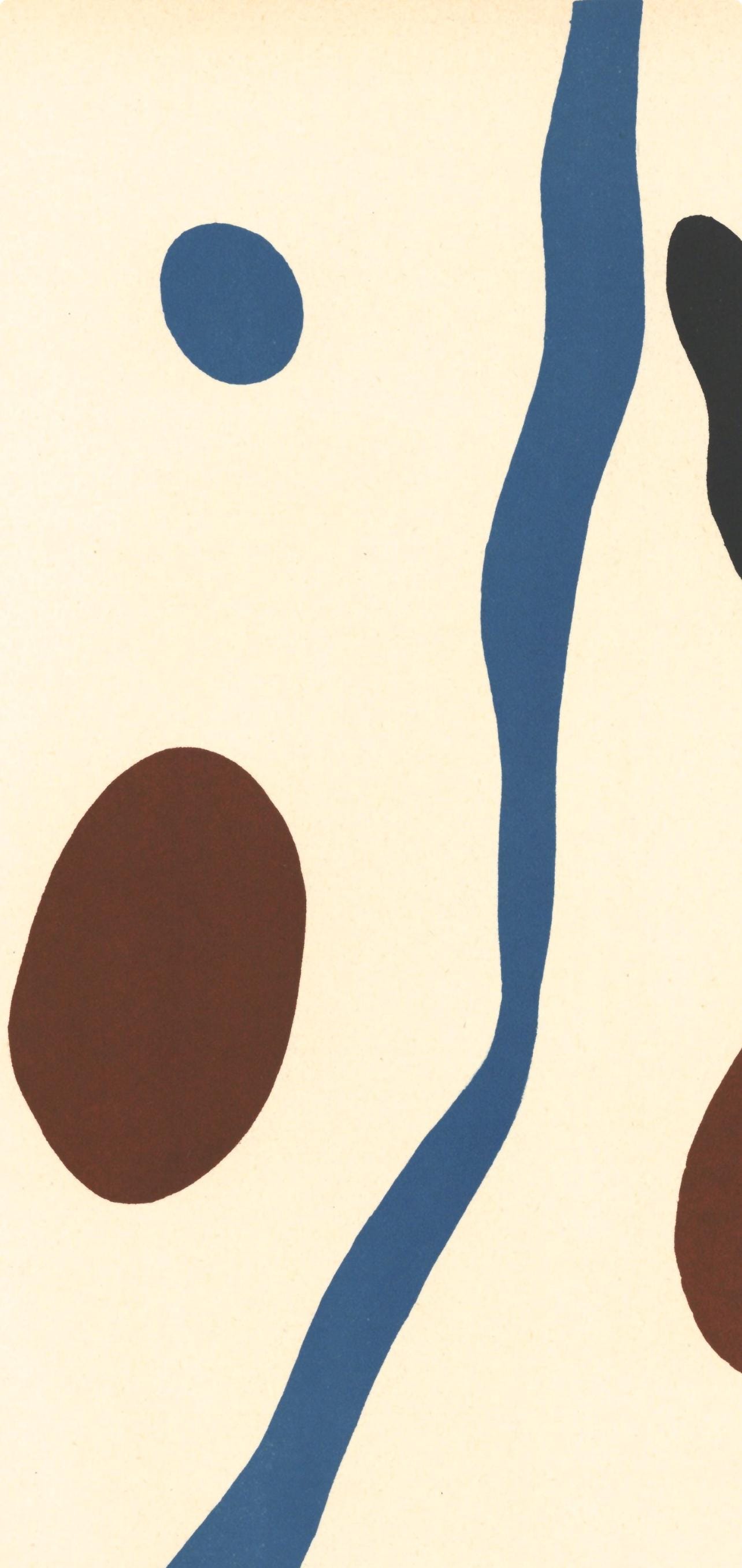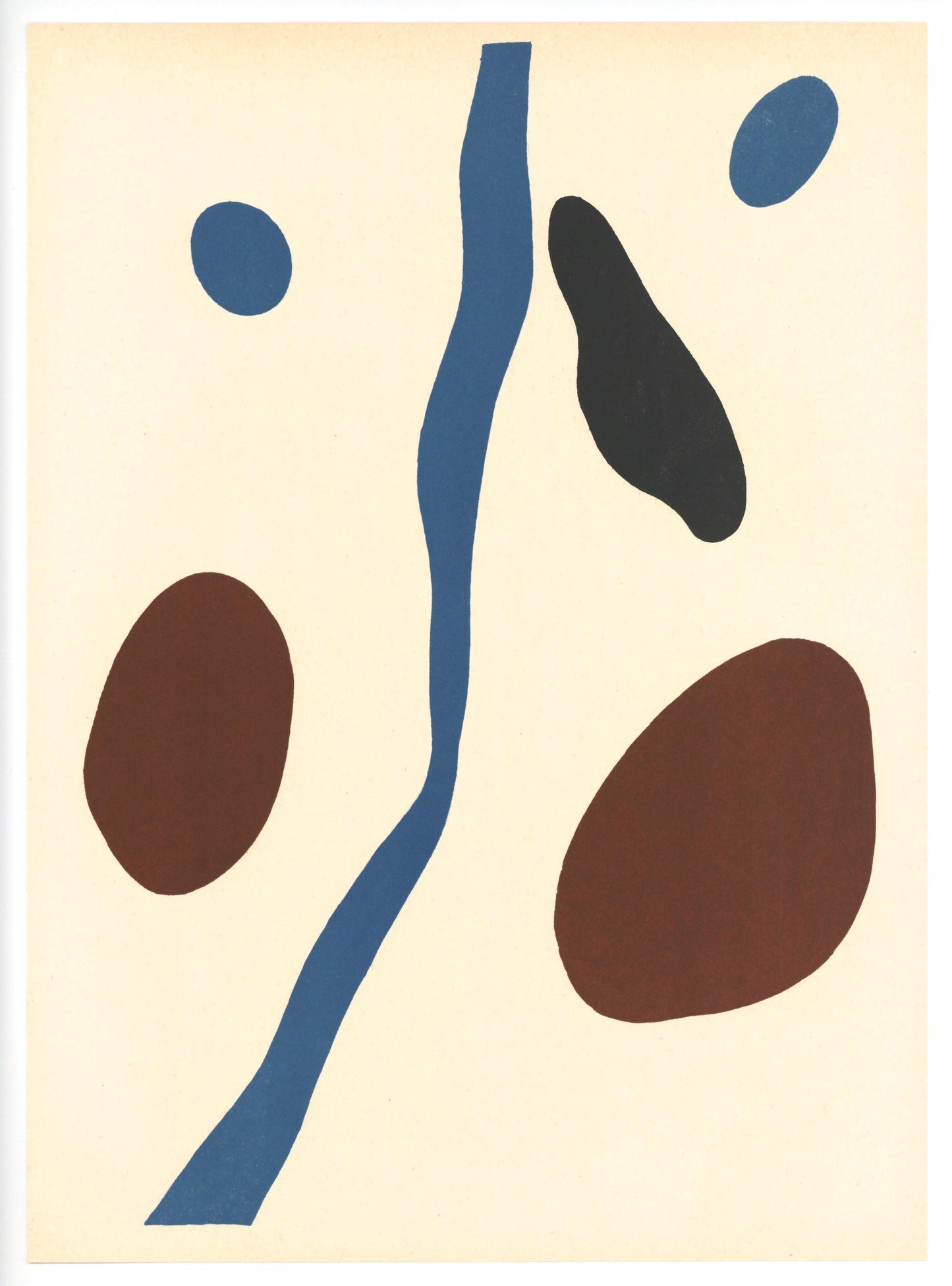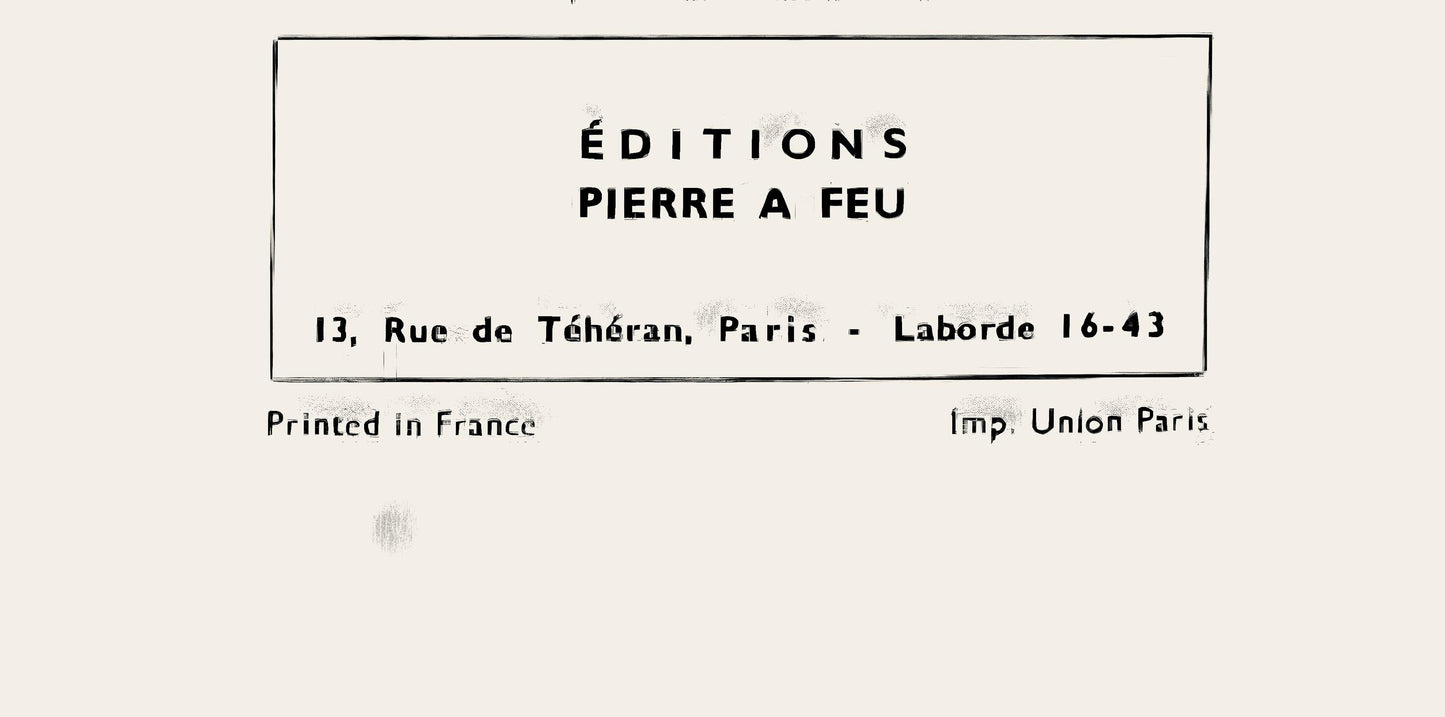1
/
of
5
Auction Ended: July 05, 2025
Post-Auction Sale Ends in:
Hans Jean Arp, Composition, Derrire Le Miroir, Lithograph
Hans Jean Arp, Composition, Derrire Le Miroir, Lithograph
Regular price
$523.95 USD
Regular price
$779.69 USD
Sale price
$523.95 USD
Unit price
/
per
Couldn't load pickup availability
Condition: Pre-Owned
Lithograph on vlin paper. Paper size: 15 x 11 inches. Excellent condition. Inscription: Unsigned and unnumbered, as issued. Notes: From Derrire le miroir, N 20-21, 1949. Published by Derrire le miroir, Paris; printed by Galerie Maeght, Paris, 1949. Excerpted from a Christies, New York lot essay, The life span of Derrire le Miroir was thirty-five years. Publication began in 1946. Aim Maeght, initiator of Derrire le Miroir, had already made few attempts to start publicat......
Lithograph on vlin paper. Paper size: 15 x 11 inches. Excellent condition. Inscription: Unsigned and unnumbered, as issued. Notes: From Derrire le miroir, N 20-21, 1949. Published by Derrire le miroir, Paris; printed by Galerie Maeght, Paris, 1949. Excerpted from a Christies, New York lot essay, The life span of Derrire le Miroir was thirty-five years. Publication began in 1946. Aim Maeght, initiator of Derrire le Miroir, had already made few attempts to start publicat......
Condition: Pre-Owned
Lithograph on vlin paper. Paper size: 15 x 11 inches. Excellent condition. Inscription: Unsigned and unnumbered, as issued. Notes: From Derrire le miroir, N 20-21, 1949. Published by Derrire le miroir, Paris; printed by Galerie Maeght, Paris, 1949. Excerpted from a Christies, New York lot essay, The life span of Derrire le Miroir was thirty-five years. Publication began in 1946. Aim Maeght, initiator of Derrire le Miroir, had already made few attempts to start publications illustrated with fine printed lithographs in colours in the years prior to the launch of Derrire le Miroir. The name, Derrire le Miroir was suggested by Jacques Kober, manager of Galerie Maeght. The gallery had opened in 1945; the first number of Derrire le Miroir was released a year later. For this first issue Geer van Velde was invited to create lithographs to illustrate the publication. The lithographs in the first issue was printed by Mourlot, Paris. The first three issues of Derrire le Miroir were unsuccessful for Maeght as far as the edition sizethe initial print-runs were far too large. From 30,000 for the first issue, the number was taken down to 10,000 for numbers two and three, until Derrire le Miroir number four was published in an edition of 1500. Maeght instituted a policy whereby unsold issues were recycled and used for the fabrication of new paper for the coming editionsthis served to both conserve resources and also usually result in ultimate edition sizes far less than 1,500. With number four, the permanent format for Derrire le Miroir was established. Lithographs in colours were key; text was limited to comments on the featuring artist's exhibition taking place in the Galerie Maeght, and this catalogue format was defining to Derrire le Miroir. Galerie Maeght took on the leading role in Paris and presented all main artists including Braque, Matisse, Chagall, Lger, Bonnard, Chillida and many more. So too did Derrire le Miroir. The idea of a magazine was meanwhile still on the mind of Aim Maeght. He found an insert as a solution. Two, and later four, pages of art review were inserted from 1952 onwards. In 1968 this find had ripened to independency and the dream of Aim Maeght was now a tangible fact named l'Art vivant. Derrire le Miroir was on it's own again. Over 250 issues in a row. At that point publisher Aim Maeght wished to make a mark with the publication of an hommage to all who once contributed to the magazine which came in the form of issue number 250, but was delayed by the death of Aim Maeght. It was published after number 253 in 1982 and became a tribute to Aim and Margurite Maeght and 35 years of friendship with artists and poets. The era of Derrire le Miroir was closed with that final publication.
JEAN ARP (1886-1966), something of a one-man movement, he couldand didmake anything into art. Best-known for his biomorphic sculptures, and one of the most versatile creative minds of the early-20th century, he fashioned sculptures out of plaster, stone and bronze, and also expressed himself in paintings, drawings, collages, and poems. His approach to form, often referred to as organic abstraction, was remarkably consistent: his wavy lines suggested plants, body parts and other natural motifs, while remaining entirely abstract. Like an extraterrestrial on earth for the very first time, Arp's genius was in presenting visual information as if he is first seeing it. Transformation, growth, fecundity, and metamorphosis are among the dominant themes in his work. Arp was in the milieu of Pablo Picasso and Henri Matisse.
Product Disclaimer: Please review the full description and photos. Lithographs may be plate-signed, hand-signed, or slab-signed and can include a COA (see images); edition numbers shown may vary from the one shipped. Pricing reflects signature type—hand-signed pieces carry a premium and are clearly labeled. 'After' or 'nach' indicates an authorised lithographic reproduction in the style of the named artist, not a unique original. For inquiries, please reach out to support@seuyco.com. By registering for or placing a bid in any SEUYCO auction, you confirm that you have read, understood, and agree to our Shipping, Payment, and Auction Policies.
Lithograph on vlin paper. Paper size: 15 x 11 inches. Excellent condition. Inscription: Unsigned and unnumbered, as issued. Notes: From Derrire le miroir, N 20-21, 1949. Published by Derrire le miroir, Paris; printed by Galerie Maeght, Paris, 1949. Excerpted from a Christies, New York lot essay, The life span of Derrire le Miroir was thirty-five years. Publication began in 1946. Aim Maeght, initiator of Derrire le Miroir, had already made few attempts to start publications illustrated with fine printed lithographs in colours in the years prior to the launch of Derrire le Miroir. The name, Derrire le Miroir was suggested by Jacques Kober, manager of Galerie Maeght. The gallery had opened in 1945; the first number of Derrire le Miroir was released a year later. For this first issue Geer van Velde was invited to create lithographs to illustrate the publication. The lithographs in the first issue was printed by Mourlot, Paris. The first three issues of Derrire le Miroir were unsuccessful for Maeght as far as the edition sizethe initial print-runs were far too large. From 30,000 for the first issue, the number was taken down to 10,000 for numbers two and three, until Derrire le Miroir number four was published in an edition of 1500. Maeght instituted a policy whereby unsold issues were recycled and used for the fabrication of new paper for the coming editionsthis served to both conserve resources and also usually result in ultimate edition sizes far less than 1,500. With number four, the permanent format for Derrire le Miroir was established. Lithographs in colours were key; text was limited to comments on the featuring artist's exhibition taking place in the Galerie Maeght, and this catalogue format was defining to Derrire le Miroir. Galerie Maeght took on the leading role in Paris and presented all main artists including Braque, Matisse, Chagall, Lger, Bonnard, Chillida and many more. So too did Derrire le Miroir. The idea of a magazine was meanwhile still on the mind of Aim Maeght. He found an insert as a solution. Two, and later four, pages of art review were inserted from 1952 onwards. In 1968 this find had ripened to independency and the dream of Aim Maeght was now a tangible fact named l'Art vivant. Derrire le Miroir was on it's own again. Over 250 issues in a row. At that point publisher Aim Maeght wished to make a mark with the publication of an hommage to all who once contributed to the magazine which came in the form of issue number 250, but was delayed by the death of Aim Maeght. It was published after number 253 in 1982 and became a tribute to Aim and Margurite Maeght and 35 years of friendship with artists and poets. The era of Derrire le Miroir was closed with that final publication.
JEAN ARP (1886-1966), something of a one-man movement, he couldand didmake anything into art. Best-known for his biomorphic sculptures, and one of the most versatile creative minds of the early-20th century, he fashioned sculptures out of plaster, stone and bronze, and also expressed himself in paintings, drawings, collages, and poems. His approach to form, often referred to as organic abstraction, was remarkably consistent: his wavy lines suggested plants, body parts and other natural motifs, while remaining entirely abstract. Like an extraterrestrial on earth for the very first time, Arp's genius was in presenting visual information as if he is first seeing it. Transformation, growth, fecundity, and metamorphosis are among the dominant themes in his work. Arp was in the milieu of Pablo Picasso and Henri Matisse.
Product Disclaimer: Please review the full description and photos. Lithographs may be plate-signed, hand-signed, or slab-signed and can include a COA (see images); edition numbers shown may vary from the one shipped. Pricing reflects signature type—hand-signed pieces carry a premium and are clearly labeled. 'After' or 'nach' indicates an authorised lithographic reproduction in the style of the named artist, not a unique original. For inquiries, please reach out to support@seuyco.com. By registering for or placing a bid in any SEUYCO auction, you confirm that you have read, understood, and agree to our Shipping, Payment, and Auction Policies.
+ Read More











